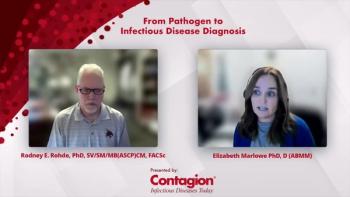
Paying for C. difficile—Are We Losing Sight of the Wider Scope of Infection Control?
Navigating the difficult road of Clostridium difficile (C. difficile) surveillance, reporting, and reimbursement.
Updated 10/2/2017 at 10:30 AM EST.Clostridium difficile (C. difficile) is an increasingly common healthcare-associated infection (HAI) that can strike fear into medical professionals and infection preventionists alike. It causes roughly
A diarrheal illness that is environmentally hardy and requires bleach for cleaning, C. difficile makes standard hospital/facility environmental disinfection challenging. It can spread between people through contaminated hands, objects, or surfaces, and requires proper hand-washing—instead of alcohol-based hand sanitizer—to get rid of it when it is in spore form. These extra infection control practices make C. difficile one tough bug to keep in check.
The growing incidence of C. difficile infections and the association between hospital-associated cases and basic infection control practices led Medicare to begin an incentive-based payment program, linking rates of C. difficile infections with reimbursement. These rates of infection can impact the hospital’s Medicare reimbursement, which was thought to incentivize improvements in quality of care and patient outcomes. Thus, each year, hospitals are
Since this new rule went into effect, hospitals have been particularly sensitive to C. difficile in order to not only prevent infections but also strengthen surveillance efforts to avoid getting tagged with a hospital-onset infection. There’s been some debate about which test is the most accurate to use to detect C. difficile as well.
Because C. difficile is increasingly being tied to reimbursement and quality measures, there has been a change in hospital practices to either over-test or avoid testing patients. The polymerase chain reaction (PCR) test sometimes can be too sensitive, and results from colonized patients can seem as though they are active infections. This, in turn, can trigger the use of antibiotics that may not be necessary.
To this end, the Centers for Medicare & Medicaid Services and the Center for Disease Control and Prevention
What do we healthcare practitioners do with such a dilemma? We’ve got a tough bug that is increasingly common, laboratory practices that often balance timeliness over accuracy in true infections, and growing pressure to avoid infections while rushing testing to reduce hospital-onset cases.
According to a recent article published in the
I presume you are reading this and thinking, “That seems pretty straight-forward and easy,” right?
As most of my fellow practitioners know, those are all things we should be doing, but C. difficile is still getting the best of us in healthcare. Add to that the fact that many hospitals are now focusing on reducing the over-abundance of C. difficile testing that is occurring because there appears that a C.-difficile-testing-happy culture has been created. Indeed, C. difficile testing algorithms and practices come up time and again at the annual meeting and discussions within the Association of Professionals in Infection Control and Epidemiology. And yet, we are still unable to find that sweet spot of effective testing practices and true infections. In many ways, the intense scrutiny on reimbursement has created a hypersensitive healthcare workforce that is focused on the testing and not the prevention methods that are so basic, they should be second nature. In the AJIC article, the investigators homed in on this oversight and highlighted the importance of using critical thinking and performing strict adherence to proven infection control measures.
Reducing the incidence of C. difficile requires new approaches and cooperation on multiple fronts as the road to infection reduction will be anything but easy. I wonder though, with increasing focus on reimbursement and growing reporting requirements, is this highly-focused approach the future of infection control and healthcare? Are we so focused on the HAIs tied to reimbursement and reporting that we’re losing sight of the wider scope that is infection control?
Let us know your thoughts:
Editor's note: A previous version of this article incorrectly listed the study as being from the American Journal of Nursing (AJIC). This is incorrect. The study is from the American Journal of Infection Control.
Newsletter
Stay ahead of emerging infectious disease threats with expert insights and breaking research. Subscribe now to get updates delivered straight to your inbox.

















































































































































































































































































